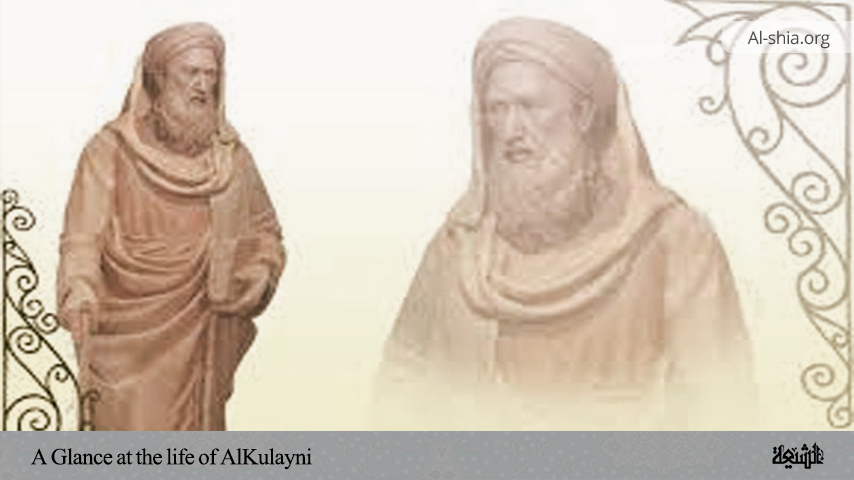In continuation of the article titled “Karbala and the Imam Husain in Persian and Indo-Muslim literature”, we shall highlight other literature on Karbala and Imam Husain (a.s) in this part.
The suwari theme was lovingly elaborated by Sangi, that is the Talpur prince ‘Abdu’l-Husayn, to whom Sindhi owes some very fine and touching songs in honour of the prince of martyrs, and who strongly emphasizes the mystical aspects of the event of Karbala’, Husain is here put in relation with the Prophet.
The Prince has made his miraj on the ground of Karbala’,
The Shah’s horse has gained the rank of Buraq.
Death brings the Imam Husain, who was riding his Dhu’l janah, into the divine presence as much as the winged Buraq brought the Prophet into the immediate divine presence during his night journey and ascent into heaven.
Sangi knows also, as ever so many Shi’i authors before him, that weeping for the sake of the Imam Husain will be recompensed by laughing in the next world, and that the true meditation of the secret of sacrifice in love can lead the seeker to the divine presence, where, finally, as he says Duality becomes distant, and then one reaches unity.
The theme of Husain as the mystical model for all those who want to pursue the path of love looms large in the poetry of the Indus Valley and in the popular poetry of the Indian Muslims, whose thought was permeated by the teaching of the Suf’is, and for whom, as for the Turkish Suf’is and for ‘Attar (and innumerable others), the suffering of the Imam Husain, and that of Hasan b. Mansur, formed a paradigm of the mystic’s life.
But there was also another way to understand the role of Husain in the history of the Islamic people, and importantly, the way was shown by Muhammad Iqbal, who was certainly a Sunni poet and philosopher. We mentioned at the beginning that it was he who saw the history of the Ka’bah defined by the two sacrifices, that of Ismail at the beginning, and that of Husain b. ‘Ali in the end (1).
But almost two decades before he wrote those lines, he had devoted a long chapter to Husain in his Rumuz-i bekhudi. (2)
Here, Husain is praised, again in the mystical vocabulary, as the Imam of the lovers, the son of the virgin, the cypresso of freedom in the Prophet’s garden. While his father, Hazrat ‘Ali, was, in mystical interpretation, the b of the bismi’llah, the son became identified with the ‘mighty slaughtering’, a beautiful mixture of the mystical and Qur’anic interpretations. But Iqbal, like his predecessors, would also allude to the fact that Husain, the prince of the best nation, used the back of the last Prophet as his riding camel, and most beautiful is Iqbal’s description of the jealous love that became honoured through his blood, which, through its imagery, again goes back to the account of the martyrdom of Husain b. Mansur al-Hallaj, who rubbed the bleeding stumps of his hands over his blackened face in order to remain surkh ru, red-faced and honoured, in spite of his suffering.
For Iqbal, the position of Husain in the Muslim community is as central as the position of the Surat al-Ikhlas in the Holy Book.
Then he turns to his favorite topic, the constant tension between the positive and negative forces, between the prophet and saint on the one hand, and the oppressor and unbeliever on the other.
Husain and Yazid stand in the same line as Moses and Pharaoh. Iqbal then goes on to show how the khilafat was separated from the Qur’anic injunctions and became a worldly kingdom with the appearance of the Umayyads, and it was here that Husain appeared like a raincloud, again the image of the blessing rain which always contrasts so impressively with the thirst and dryness of the actual scene of Karbala’.
It was Husain’s blood that rained upon the desert of Karbala’ and left the red tulips there. The connection between the tulips in their red garments and the bloodstained garments of the martyrs has been a favorite image of Persian poetry since at least the 15th century, and when one thinks of the central place which the tulip occupies in Iqbal’s thought and poetry as the flower of the manifestation of the divine fire, as the symbol of the Burning Bush on Mount Sinai, and as the flower that symbolizes the independent growth of man’s khudi (=self) under the most difficult circumstances, when one takes all these aspects of the tulip together, one understands why the poet has the Imam Husain ‘plant tulips in the desert of Karbala”.
Perhaps the similarity of the sound of la ilah and lala (=tulip), as well as the fact that lala has the same numerical value as the word Allah, e.g., 66, may have enhanced Iqbal’s use of the image in connection with the Imam Husain, whose blood ‘created the meadow’, and who constructed a building of ‘there is no deity but God. But whereas earlier mystical poets used to emphasize the person of Husain as model for the mystic who through self-sacrifice, finally reaches union with God, Iqbal, understandably, stresses another point: ‘To lift the sword is the work of those who fight for the glory of religion, and to preserve the God-given order.’ ‘Husain blood, as it were, wrote the commentary on these words, and thus awakened a sleeping nation.
Again, the parallel with Husain b. Mansur is evident (at least with Husayn b. Mansur in the way Iqbal interprets him: he too claims, in the Falak-i mushtari in the Javidnama, that he had come to bring resurrection to the spiritually dead, and had therefore to suffer). But when Husain b. ‘Ali drew the sword, the sword of Allah, he shed the blood of those who are occupied with, and interested in, things other than God; graphically, the word la, the beginning of the shahada, resembles the form of a sword (preferably a two-edged sword, like Dhu’l-fiqar), and this sword does away with everything that is an object of worship besides God. It is the prophetic ‘No’ to anything that might be seen beside the Lord. By using the sword of ‘No’, Husain, by his martyrdom, wrote the letters ‘but God’ (illa Allah) in the desert, and thus wrote the title of the script by which the Muslims find salvation.
It is from Husain, says Iqbal, that we have learned the mysteries of the Qur’an, and when the glory of Syria and Baghdad and the marvels of Granada may be forgotten, yet, the strings of the instrument of the Muslims still resound with Husain’s melody, and faith remains fresh thanks to his call to prayer. Husain thus incorporates all the ideals which a true Muslim should possess, as Iqbal draws his picture: bravery and manliness, and, more than anything else, the dedication to the acknowledgement of God’s absolute Unity; not in the sense of becoming united with Him in fana as the Sufi poets had sung, but, rather, as the herald who by his shahada, by his martyrdom, is not only a shahid, a martyr, but at the same time a witness, a shahid, for the unity of God, and thus the model for all generations of Muslims. It is true, as Iqbal states, that the strings of the Muslims’ instruments still resound with his name, and we may close with the last verse of the chapter devoted to him in the Rumuz-i bekhudi:
O Zephir, O messenger of those who are far away
Bring our tears to his pure dust.
NOTES:
____________________________
1. Bal-i Jibril, p. 92.
2. p. 126ff






